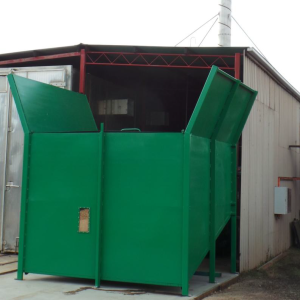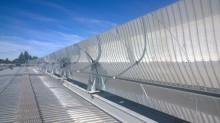What you will find on this page: latest news; Ballarat weather forecast (live); Narmboolville Fed Uni on-line game; people resources; links to action; links to forums; Ballaratians sharing; City of Ballarat; Central Highlands Water; business & industry; Beaufort Hospital; Hepburn Wind
Ballarat’s knowledge base for responding to global issues at the local level
Latest News End Latest News Try your hand at sustainable farming with Fed Uni’s on-line game Narmboolville 13 May 2015, An innovative game to explore the range of futures open to the pastoral industry within a carbon economy has been launched by Federation University Australia. The game, Narmboolville, is based on the Sovereign Hill property Narmbool, 15 km south east of Ballarat. It brings together environmental science, accounting and information technology and is the culmination of a two-year research project supported by the Williamson H.D. Trust and Sovereign Hill Museums Association. Click on graphic to open game website. Read More here “We saw Narmbool as a fantastic location to demonstrate the options that may present themselves for agriculture into the future, not least because of the excellent environmental education program associated with the property,” Professor Peter Gell, one of the co-ordinators of the project, said. “The main challenge was the real interdisciplinary nature of the project as we wanted to ensure that the game was based on real scientific data and real carbon accounting approaches. “We then let the IT boffins loose to create a really engaging game that tests your skills as a farm manager.” The objective of this project is to bring together the principles of carbon sequestration and livestock management to encourage sustainable farm management practices under a range of future climate scenarios. The game, developed under the guidance of project co-coordinator Dr Charlynn Miller from FedUni, requires the user to secure an income from carbon but also seek to maintain an economically viable farm business. In essence the user becomes the farm manager, making decisions about the trade-off between managing for trees and agricultural production. The game is freely accessible via the University’s Narmbool game website. When starting the game, you can choose how much carbon you would like to sell as Australian Carbon Credit Units (ACCUs). ACCUs are regulated carbon credits issued by the Clean Energy Regulator for Australian sequestration or emission reduction projects. When you choose the amount of stored carbon to sell as ACCUs, keep in mind that a risk of reversal buffer will be deducted from your ACCUs. The larger the buffer size, the less ACCUs you will be issued upfront but the greater chance you will be able to maintain the carbon storage for 100 years. Basically, you promise to store carbon in the land and trees of Narmbool for 100 years and get paid to do it! Just make sure you manage the property well so that you don’t go broke in the meantime! People: outlining field of expertise and/or influence NAME: Andrew Lang FIELD OF EXPERTISE/INFLUENCE: Bioenergy technology and adaptation to local situations. See also “Reports & Submissions” page and “New Energy Sources” page CONTACT: andrewlang001@bigpond.com AVAILABILITY: Speaker? Yes Project Consult? Yes NAME: Ian Rossiter FIELD OF EXPERTISE/INFLUENCE: Local government; waste & water management. See also”Cities Responding” and it’s sub page “Fundamentals for Transition” CONTACT: rossiteriandc@bigpond.com AVAILABILITY: Speaker? Yes Project Consult? Yes NAME: Simon Reid FIELD OF EXPERTISE/INFLUENCE:Solar and renewable energy industry and installation. See also “New Energy Sources” page CONTACT: simon@breaze.org.au Links for action: local organisation websites/contacts Local Adaptation Pathways Program Forum Report (June 2011)The Australian Government through the Department of Climate Change and Energy Efficiency (the Department) initiated the Local Adaptation Pathways Program (LAPP) in response to the local government sector’s need to increase their awareness of, and adaptive capacity to respond to, the impacts of climate change. The LAPP Forum was held to bring together LAPP participant councils (90 across Australia)and regional organisations and document the learnings and outcomes from the LAPP program. The actions and lessons learnt from the LAPP participants was re-configured into a sequential program of integrated recommendations for consideration by the Department. 1. Establish the LAPP vulnerabilities and actions database as an open resource for the local government sector; NOTE: No action was taken by the Department regarding the above recommendations – another wasted opportunity! Links to forums: continuing the dialogue What is City of Ballarat Council up to? e.g. Development & implementation of an Urban Forestry Strategy; Storm Water Management What is Central Highlands Water up to? Access further data from BOM Climate Data Online site here Central Highlands Water customers are being urged to choose the right water for the job by making greater use of rainwater, and stormwater, and recycled water for non-drinking purposes. What is “right water”? ‘Right Water is a new household-focused initiative to help Victorian families make greater use of alternative water sources around their home and garden, helping to reduce the use of drinking water supplies for non-drinking purposes Catchment Management Authorities Within the Ballarat Region are the headwaters of the following river basins: Hopkins; Loddon; Corangamite; Barwon and the Moorabool. The Authorities set up to oversee the health of these systems are: Corangamite CMA; Glenelg-Hopkins CMA; North Central CMA and Southern Rural Water is the manager for rural water in the southern region. How are the CMA’s responding to climate change? Access links below What is business and industry up to? 5 March 2018, Renew Economy, Victoria town’s breakthrough deal on network tariffs as it pursues 100% renewables. A small Victorian town that is hoping to achieve 100 per cent renewable energy as early as 2020 has achieved what appears to be a groundbreaking deal on network charges that could pave the way for similar projects around the country. Newstead, a town of less than 1,500 people in central Victoria, has negotiated new network charges with its electricity distributor, Powercor, that will remove some of the hurdles of building a small solar farm and sharing the output with the community. The two-year trial on new network fees will mean that the community can install solar and share the output without being hit by further network charges for each kilowatt they consume. Equally importantly, they appear to break the nexus between lower energy use and soaring grid charges, and will help ensure that everyone benefits from a local renewable energy transition, and not just those who can afford it. The Powercor tariffs – specially constructed for the people of Newstead, but with a broader energy market transition in mind – introduce a fixed daily network charge of $1 day, and a monthly “demand” charge of $2/kW. It completely removes fees based on kilowatt-hour consumption. Tosh Szatow, from energy consultants Energy for the People, which has been advising the Newstead community group, Renewables Newstead, says the new tariffs will have two significant benefits. One is the way it will make community-owned solar farms, and sharing that solar output, more attractive, because it will eliminate the perverse incentive for individuals to preference rooftop solar, over a shared solar farm, despite the latter option having a lower $/kW installed cost. Read More here November 2016 – About the Future Landscapes Project: Future Landscapes is a climate change adaptation project that will help Councils from the Central Highlands region of Victoria, better understand the impacts of projected climate change on the region’s natural assets and respond effectively to protect and improve agriculture and natural resources across the region. Based in the Central Highlands of Victoria, Future Landscapes is a collaborative partnership between the Hepburn Shire Council, Golden Plains Shire, Moorabool Council, Pyrenees Shire Council, City of Ballarat and Cultivate Agribusiness Central Highlands Inc. Research Findings: The Future Landscapes research findings have provided a unique insight into the opportunities for agriculture, biodiversity and land use planning for the Central Highlands Region. The project provides an indication of the predicted climate variations that will be experienced across the over the next fifty years and highlights where the region can capitalise on potential future agricultural production while planning for land use and the protection of biodiversity assets. Access website and case studies here June 2015: Project now completed and up and running! Stockland Wendouree shoppers cooled by the sun: In August 2013 ARENA committed $500,000 to CSIRO for a $1 million project to demonstrate its novel solar powered air-conditioning technology at the Stockland Wendouree shopping centre in Victoria. The project aimed to advance the concentrating solar thermal technology towards commercialisation by piloting the technology on a major shopping centre. Shopping centres typically have a high demand for energy due to air-conditioning, hot water and electricity use. CSIRO, together with partners Stockland Group and NEP Solar, developed and installed the system to collect solar energy from the shopping centre roof and use it to supply the building with heating and cooling. The system is supplied by high temperature heat from concentrating solar collectors to maximise its efficiency. The technology has the potential to displace conventional air-conditioning in Australian commercial buildings, a major contributor to greenhouse gas emissions, peak electricity demand and electricity bills. Source: Australian Renewable Energy Agency 16 July 2015, Renew Economy, Powercor to add Australia’s ‘biggest’ battery storage to regional grid. Victorian network operator Powercor has announced plans to install what would be Australia’s largest battery storage system, on its regional grid in Buninyong, south of Ballarat. The 2MWh lithium-ion battery – which is currently being built in South Korea by Kokam – will be housed in 40 foot shipping container and, the company says, will be capable of providing approximately 3,000 customers with an hour of back-up power during an electricity outage. But for Powercor, which already has a pretty good record of reliable supply – the network experienced a total of 100 minutes of outages last year – the project is also about assessing the role of batteries on its network and, in some cases, deferring the need for costly upgrades. Read More here Wimmera & Central Highlands Bioenergy Project – Beaufort Hospital: Like most small rural hospitals, Beaufort Hospital was facing the challenge of rising costs and shrinking budgets. The hospital used LPG for heating and hot water and this fuel cost the organisation around $60,000 per year. The Central Highlands Agribusiness Forum (CHAF) and the Pyrenees Shire identified the hospital as an ideal demonstration site for bioenergy. The Beaufort Hospital boiler had a few minor technical problems initially but is now performing well. In a full year of operation it used 91 tonne of wood chips and reduced the hospitals’ LPG use by 37,000 litres. After deducting wood chip, operating and maintenance costs, the net saving for the hospital has been $26,798. There was an underestimation the amount of potable hot water use and in hindsight there should have been included a hot water system with the installation. This would have almost doubled the savings. The other development that has occurred because of the project is the installation of a 240kW wood chip fuelled boiler at the Pyrenees Timber sawmill in Chute. The Polish built Moderator boiler, supplied by Dragon NRG in Bendigo, allows the sawmill use the same chips as supplied to the hospital to dry the timber it produces. Other proposed bioenergy projects in the region include heating the Horsham Aquatic Centre with wood waste, utilizing bioenergy for developments in Hepburn Shire and developing a Bio Economy Development Centre and a Waste to Energy plant in the Ballarat West Employment Zone. Bioenergy works and can save you money! For more information contact Daryl Scherger on (03) 5349 1100 or email Hepburn Wind is the owner and operator of Australia’s first community owned wind farm, at Leonards Hill, just south of Daylesford Victoria. The 4.1 MW wind farm comprises two turbines and is located at Leonards Hill, in Central Victoria, just south of Daylesford and approximately 100 km north-west of Melbourne. Hepburn Wind is the trading name of Hepburn Community Wind Park Co-operative Ltd, a co-operative registered in Victoria, Australia. Hepburn Wind was established in 2007 by the Hepburn Renewable Energy Association, now known as SHARE. Read more here
BIO: Andrew is a vice president of the World Bioenergy Association and the board member representing Australasia-Oceania. Between four to five overseas trips a year he manages 130 ha of multi-purpose sawlog plantings on the family farm near Ballarat. He is a Churchill Fellow (2003) and a Gottstein Fellow (2008) and has made many other study trips looking at small scale forestry and use of biomass for energy, including to North America, Scandinavia, Brazil, South Korea and China. He was a foundation member of Farm Forest Growers Victoria and SMARTimbers Cooperative. Andrew provides advice to shires and businesses on their bioenergy options, and played an early role in Beaufort hospital changing to a biomass-fuelled heating system. In 2011 he managed a distance course (auspiced by CHAF) provided by Linnaeus University in Sweden that resulted in a project to scope the feasible options for Ballarat’s energy from wastes and regional biomass.
BIO: Ian studied horticulture at the Victorian College of Agriculture and Horticulture, Burnley (Now University of Melbourne Land and Environment Faculty) before working as a Technical Officer at Monash University Botany Department and a 27 year career working in local government. In the roles of General Manager City Sustainability and Coordinator Strategic Waste and Water Management at the City of Ballarat, Ian was involved in developing the council’s environment sustainability and waste strategies and attended the 2012 World Bioenergy Congress in Jonkerping Sweden where he became aware of the extensive use of wood in other countries to produce energy and to sequester carbon. Ian has been a member of the Victorian Sustainability Advisory Committee, Advisor to Highlands Regional Waste Management Group, is the current chairperson of Regional Sustainability Alliance Ballarat and Chair of Ballarat Renewable Energy and Zero Emissions (BREAZE).
BIO: Simon has an outstanding knowledge of solar and is keen to support people and organisations to operate more sustainably while reducing their power bills. He currently works on a range of commercial and community projects installing solar power and hot water. He holds a Certificate IV in Business Sustainability Assessment and comes with many years of practical experience from six years of working with BREAZE Ballarat advising, installing and doing public lectures on energy management and retrofitting. He has been involved in installing over 1000 solar power and solar hot water arrays through BREAZE on both large commercial installations and small dwellings. Simon also has a working understanding of carbon accounting, bioenergy and other forms of renewable energy.
2. Develop a framework (input, review and evaluation process and on-line system) to continue to add to and manage the database as new projects are created;
3. Involve new adaptation programs from the beginning in this mechanism to ensure continuity of knowledge management;
4. Resource a long-term partnership approach with key local government sectoral organisations and identified other sectors to build common language, frameworks and approaches to climate change adaptation;
5. Continue this approach to develop cross-sectoral regional partnerships for new climate change adaptation project development;
6. Publish appropriate case studies that provide guidance and inspiration; and
7. Resource a series of roundtables for local governments across the country to increase understanding of, and access to, the above tools.
 The Regional Bioenergy Project was developed out of this recognition. A heating study of the hospital was commissioned and boiler specification developed. Tenders were then sought to provide a biomass boiler system to heat the hospital based on these specifications. In July 2013 a New Zealand company, Living Energy, was appointed to carry out the boiler installation. The new boiler was a 110 kW Hargassner boiler manufactured in Austria. It’s housed in a modified shipping container which is both boiler house and fuel store. Fuel for the boiler is supplied from the Pyrenees Timber sawmill at nearby Chute. The installation is complete and viewing windows allow the public to see it in operation.
The Regional Bioenergy Project was developed out of this recognition. A heating study of the hospital was commissioned and boiler specification developed. Tenders were then sought to provide a biomass boiler system to heat the hospital based on these specifications. In July 2013 a New Zealand company, Living Energy, was appointed to carry out the boiler installation. The new boiler was a 110 kW Hargassner boiler manufactured in Austria. It’s housed in a modified shipping container which is both boiler house and fuel store. Fuel for the boiler is supplied from the Pyrenees Timber sawmill at nearby Chute. The installation is complete and viewing windows allow the public to see it in operation.

